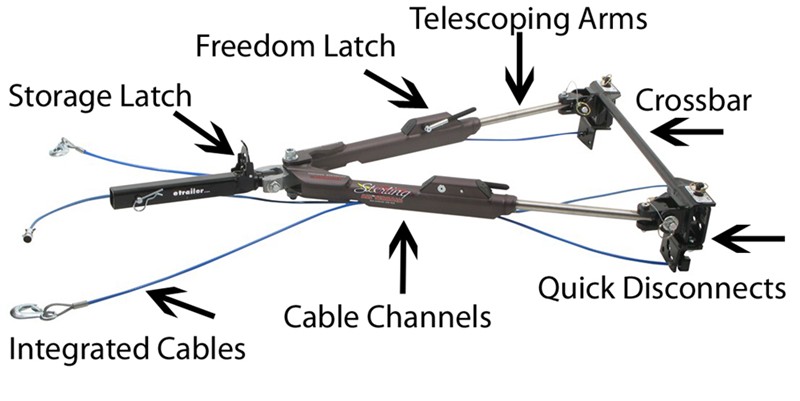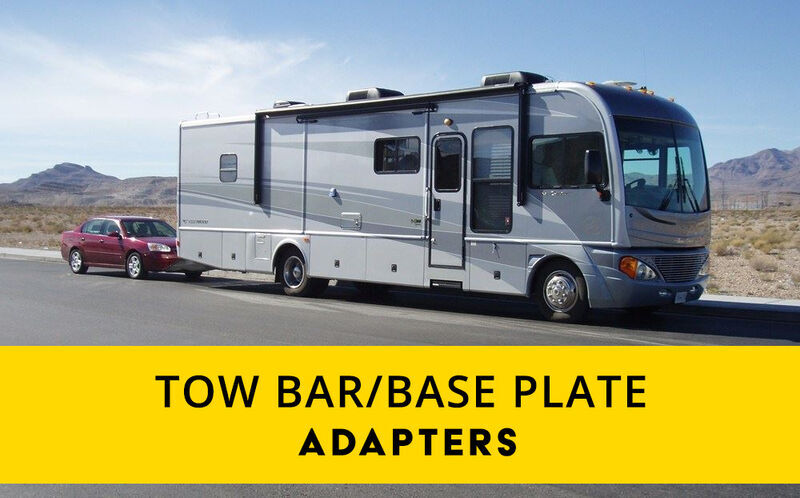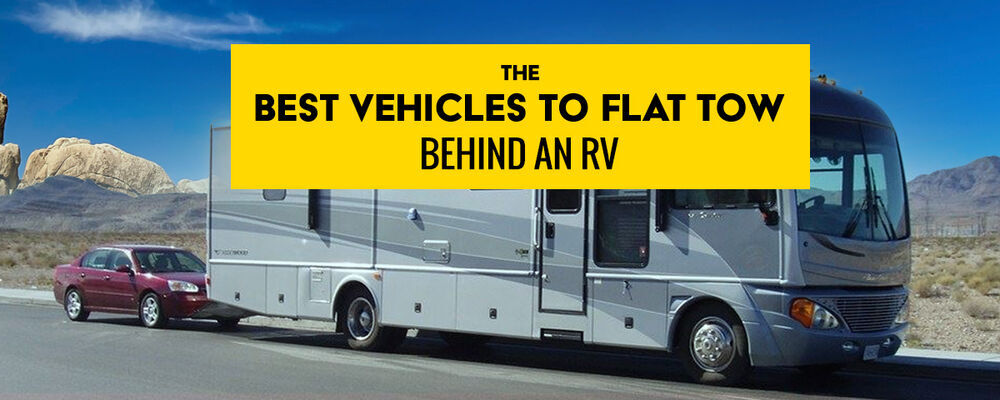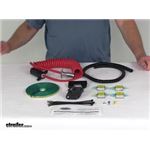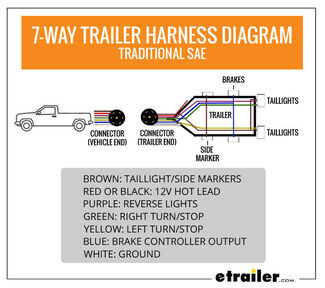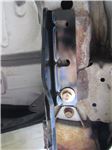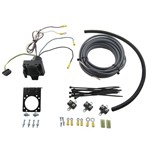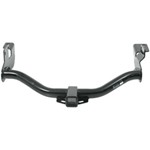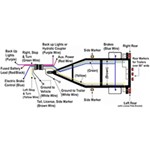Roadmaster Vehicle-Specific Base Plates
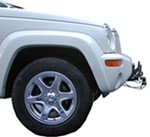
Classic - Old style design without removable arms XL - Removable arms held in place with pin and clips EZ and EZ2 - Removable arms twist-lock into place EZ4 - Removable arms are spring loaded and twist-lock into place
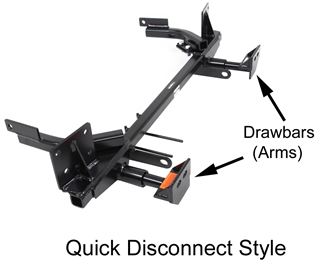
MS - Arms are not removable MX - Removable arms held in place with pins and clips EZ5 - Removable arms are spring loaded and twist-lock into place
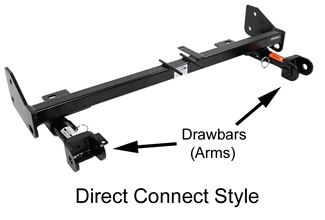
Consist of two main parts: Frame Bracket(s) Mounts directly to the dinghy's frame
Drawbar arms Are either welded to the frame brackets or removable Provide attachment points for the tow bar
Install on dinghy's frame using as many existing attachment points as possible without sacrificing strength and safety When multiple base plate kits are available for a specific vehicle, they will install in similar ways, using the same points on the frame. The differences lie in the drawbar type and whether the base plates come as one or two pieces. The type of base plates available for any given vehicle depends on the vehicle's frame type Larger vehicles can have base plates brackets that come as two separate pieces because the vehicle frame is strong enough to handle the stresses of towing Smaller vehicles may come with a one-piece bracket to reinforce the vehicle frame for towing
Constructed of laser-cut steel Finished with black powder coat Tested for structural integrity
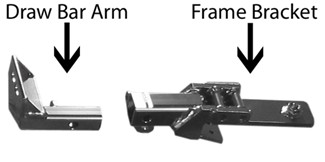
Designed for older vehicles Fixed drawbar arms - not removable Pieces of metal permanently visible on the front of the dinghy
Work with all types of Roadmaster tow bars Require crossbar for the tow bar Crossbar provides additional strength for towing setups and also serves as the link between tow bar arms and drawbar arms Quick-disconnect compatible
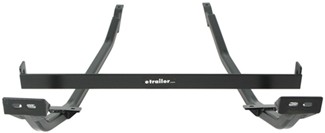
Available for cars, SUVs and trucks Removable drawbar arms Invisible frame brackets, once drawbar arms are removed Square drawbar arms held in place with hitch pin and clip Fat end of arm is bolted to tow bar crossbar or attached to quick disconnects
Work with all types of Roadmaster tow bars Require crossbar on tow bar Crossbar provides additional strength to towing setups and is also the link between tow bar arms and drawbar arms
Quick disconnect compatible

Available for cars, SUVs and trucks Brackets can come as single units or as two parts
Convenient twist-lock, removable drawbar arms Do not require pin and clip to lock into place Drawbar arms insert into frame brackets and twist 90 degrees to lock
Invisible brackets when drawbar is not installed Requires crossbar Crossbar provides additional strength to towing setups and is also the link between tow bar arms and drawbar arms
Quick disconnect compatible Work with all models of Roadmaster tow bars
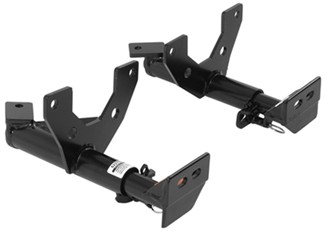
Available for cars, SUVs and trucks Brackets can come as single units or as two parts
Convenient twist-lock, removable drawbar arms Spring-loaded design allows base plates to be recessed farther and hidden better than EZ and EZ2 base plates Do not require pin and clip to lock into place Drawbar arms insert into frame brackets and twist 90 degrees to lock
Invisible brackets when drawbar is not installed Requires crossbar Crossbar provides additional strength to towing setups and is also the link between tow bar arms and drawbar arms
Quick disconnect compatible Work with all models of Roadmaster tow bars

Available for cars, SUVs and trucks Brackets can come as single units or as two parts
Convenient twist-lock, removable drawbar arms Spring-loaded design allows base plates to be recessed farther and hidden better than EZ and EZ2 base plates Do not require pin and clip to lock into place Drawbar arms insert into frame brackets and twist 90 degrees to lock
Invisible brackets when drawbar is not installed Arms of base plates attach directly to the telescoping tow bar arms Does not require crossbar or quick disconnects Speeds up hooking-up process Looks better than standard, XL or EZ base plate connection The drawbar arm is a two-prong fork that a pin is inserted through to attach the plates to the tow bar arm Not compatible with accessories that require quick disconnects
Compatible with Roadmaster motor-home-mounted tow bars
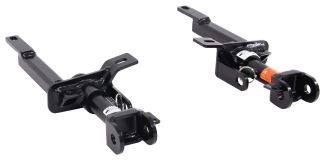
Designed for vehicles with heavy-duty frames (trucks and SUVs) Fixed drawbar arms - not removable Pieces of metal permanently visible on the front of the dinghy
Arms of base plates attach directly to the telescoping tow bar arms Does not require crossbar or quick disconnects Speeds up hooking-up process Looks better than standard, XL or EZ base plate connection The drawbar arm is a two-prong fork that a pin is inserted through to attach the plates to the tow bar arm Not compatible with accessories that require quick disconnects
Compatible with Roadmaster motor-home-mounted tow bars
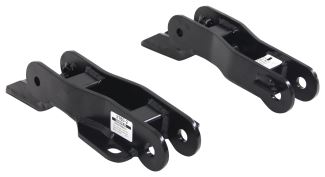
Designed for vehicles with heavy-duty frames (trucks and SUVs) Removable drawbar arms Arms of base plates attach directly to the telescoping tow bar arms Does not require crossbar or quick disconnects Speeds up hooking-up process Looks better than standard, XL or EZ base plate connection The drawbar arm is a two-prong fork that a pin is inserted through to attach the plates to the tow bar arm Not compatible with accessories that require quick disconnects
Compatible with Roadmaster motor-home-mounted tow bars
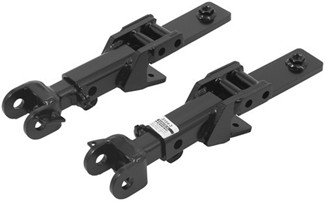
Use quick disconnects to conveniently attach the drawbar to the tow bar crossbar Quick disconnects come as two parts: Half of the quick disconnect bolts to the crossbar of the tow bar; the other half bolts to the base plate After initial installation, you can connect the tow bar by sliding the tow bar and drawbar arm quick disconnects together and securing them with a pin and clip
Bolt the base plate drawbar arms directly to the tow bar crossbar Each time you attach the tow bar to the base plates, the crossbar and drawbar arms must be bolted together
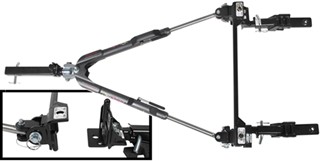
Conveniently attach drawbar arms directly to the tow bar arms using a pin and clip Simplest hookup Does not require intermediate quick disconnects or crossbar
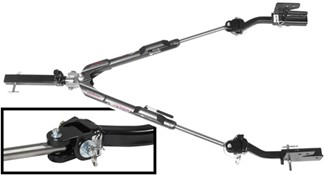
The tow bar side of an adapter has prongs that correspond to the tow bar attachment points The dinghy side of an adapter has connection points that correspond to the base plate attachment points
Determine which part of your towing set up is from Roadmaster. Depending on which part is from Roadmaster, the type of adapter needed will fall into one of two categories: Adapters to Roadmaster base plates These adapters convert a tow bar from a different manufacturer, like Blue Ox or Valley, to work with Roadmaster base plates All adapters that convert a tow bar to work with Roadmaster base plates require quick disconnects to link the two products Some adapters come with quick disconnects. You may need to purchase quick disconnects separately.
Adapters from Roadmaster towbars to base plates from a different manufacturer Allows Roadmaster tow bar to tow a dinghy with base plates from a different manufacturer (e.g., Blue Ox or Demco) Adapters connect directly to the telescoping arms of the Roadmaster tow bar The Roadmaster tow bar crossbar is removed and replaced with the adapter
Pins and clips attach the adapter to the Roadmaster tow bar arms and to the base plates There are no adapters available for the standard Stowmaster and Tracker tow bars
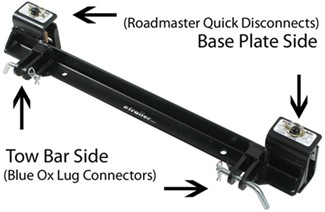
Departments
Towing
- Trailer Hitch
- Fifth Wheel
- Gooseneck
- Towing a Vehicle
- Front Hitch
- RV Hitch
- ATV Hitch
- HD Truck Hitch
- Vehicle Wiring
- Brake Controller
- Ball Mounts
- Weight Distribution
Sports and Recreation
Trailer Parts
- Utility Trailer
- Boat Trailer
- Landscape Trailer
- Enclosed Trailer
- 5th/Camper Trailer
- Car Hauler
- Horse Trailer
Vehicle
Contact & Help



